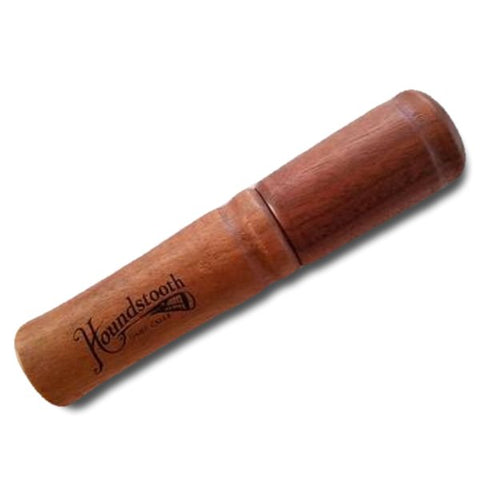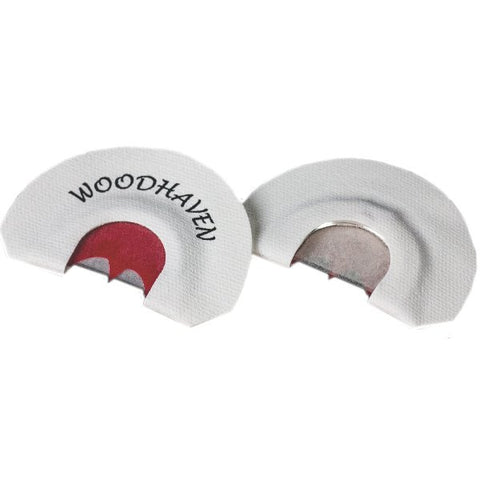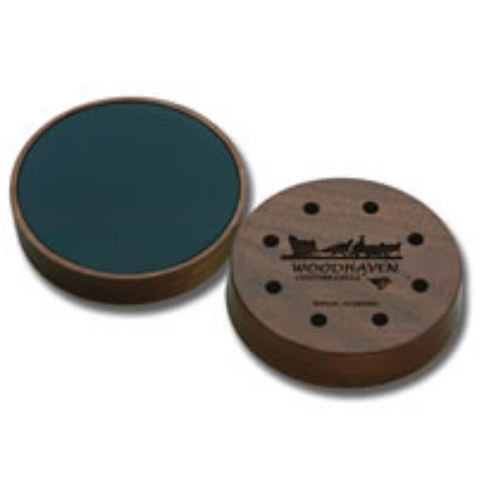Spring is here, and at Fort Thompson Sporting Goods, that can only mean one thing: it's turkey time! We take Turkey Season seriously around here, and we've grabbed Ray (our manager and serious turkey hunting veteran) to give us his top insider picks for the best calls and locators to help you bag even the wariest of gobblers. Ray's been chasing gobblers for going on 10 years, so he knows a thing or two about what works in the field. He’s ready to share some of Fort Thompson's most effective turkey calls, from beginner-friendly options to versatile tools that can master any gobbler. We'll also cover locators to help you pinpoint those birds and get into prime position before they even know you're there. So, whether you're a seasoned turkey hunter or just getting started, let us equip you with the knowledge and tools you need for a successful spring season.

Who's afraid of the big ole owl? You guessed it – turkeys are! That's why Ray suggests the Houndstooth Morning Striker as his top pick for a turkey locator call. Now, for those new to the game, locator calls are all about finding those elusive birds before you even think about busting out your gobbler calls. Here's the science behind it: owls are natural predators of turkeys, and their hooting sends shivers down a gobbler's spine.
The Houndstooth Morning Striker takes advantage of this natural fear. With a few simple puffs of air, you can mimic the chilling hoot of an owl in the distance. Within moments, according to Ray, you'll likely hear a response from the dominant gobbler in the area. That's your golden ticket! The telltale gobble or alert cluck will pinpoint the location of your target bird, allowing you to set up strategically before ever revealing your presence. It's like having a built-in turkey GPS, and with the Houndstooth Morning Striker in your pack, you'll be one step closer to bagging that trophy gobbler this spring.

Now that you've identified the turkey's roost in the trees (the rafter), it's prime time to utilize your mouth call to mimic a hen's vocalizations and entice the gobbler down. Here's where the WoodHaven Red Wasp shines. This highly-rated diaphragm call from WoodHaven is a favorite among hunters for its exceptional ability to replicate the sounds of a mature, raspy hen.
The Red Wasp's success lies in its unique 3-reed design. The top reed is crafted from red latex and features a V-cut. This combination allows the call to produce a wide range of tones, from the sharp cackles and cuts often used to agitate a gobbler to the soft clucks and purrs that can soothe a wary tom. The two remaining reeds are made from prophylactic material, adding durability and contributing to the call's realistic sound production. With some practice mastering the various techniques, you can use the WoodHaven Red Wasp to sound like a seasoned hen, ready to attract even the most cautious gobbler.

If friction calls are more your style, Ray also has his top picks. WoodHaven makes the Mahogany Hen box call, a fantastic choice for turkey hunters. Box calls are friction calls that use a striker, or paddle, rubbed against a surface to produce sound. The WoodHaven Mahogany Hen is made with mahogany, a type of wood known for creating a sweet, raspy sound that perfectly imitates the clucks and yelps of a hen turkey. This is especially important for attracting male turkeys or gobblers looking to breed with hens. By using the WoodHaven Mahogany box call to mimic the sounds of a hen, hunters can lure gobblers into close range for a hunting opportunity.

Box calls can be too bulky for some hunters who prefer a more streamlined setup. For those hunters, Ray also recommends the WoodHaven "The Legend Glass" slate-type call. WoodHaven has a reputation for being the top dog when it comes to slate calls, and their Legend Glass is no exception. These calls are prized for their ability to produce incredibly realistic and high-pitched yelps, cuts, and cackles that can travel long distances. Unlike box calls, slate calls use a striker rubbed directly against a slate surface within the call. The varying textures and densities of slate can create a wide range of sounds, making them highly versatile for mimicking the various vocalizations of a hen turkey.
However, slate calls can have a bit of a learning curve to master. The friction between the striker and the slate requires a practiced touch to produce the desired sounds consistently. That’s where the quality of the call itself comes into play. WoodHaven's meticulous craftsmanship ensures that The Legend Glass has a smooth, consistent slate surface that makes it easier to learn and master, even for beginners. This, combined with WoodHaven's reputation for top-notch call design, makes The Legend Glass a perfect choice for hunters who want a more compact option without sacrificing sound quality.
So, with Ray's expert picks and a little practice, you'll be primed to conquer the spring turkey season. Remember, patience and persistence are the cornerstones of success. Here's how to leverage Ray's insights to maximize your chances:
- Scout Like a Shadow: Before sunrise paints the sky, hit the woods, and become one with the environment. Look for signs of turkey activity, like scratch marks, droppings, or roost sites in tall trees. This intel is crucial for setting up your ambush point later.
- Become the Master of Silence: Once you've identified a promising location, silence becomes your weapon. Minimize movement and wear natural fabrics that blend in with your surroundings. Avoid crunching leaves or snapping twigs – a single misplaced sound can send a wary gobbler bolting in the opposite direction.
- Master the Art of the Call: With the pre-dawn light filtering through the trees, it's prime time to utilize your calls. Start subtly with the locator call, like the Houndstooth Morning Striker, to pinpoint the gobbler's location. Once you hear that telltale response, it’s time to transition to your chosen gobbler call, like the WoodHaven Red Wasp or Mahogany Hen box call, depending on your preference. Mimic the soft clucks and purrs of a contented hen to lure the gobbler in for a closer look.
- Work the Call Sequence: As the gobbler approaches, experiment with different call sequences. A series of soft yelps can mimic a lost hen searching for company, while a few sharp cuts can portray an agitated bird, piquing the gobbler's curiosity. Remember, natural pauses and variations are key—avoid sounding robotic.
By combining Ray's top call picks with these strategic steps, you'll be well on your way to a thrilling encounter. This turkey season, the crisp spring air will be filled with the symphony of your calls, and with a little luck, you might be rewarded with the sight of a magnificent gobbler strutting your way. So, grab your gear, put Ray's wisdom into practice, and get ready for an unforgettable turkey season!

